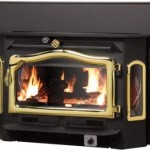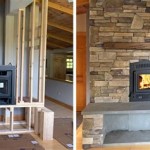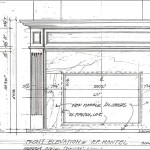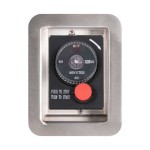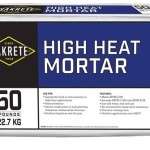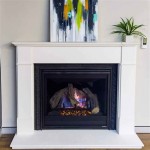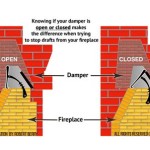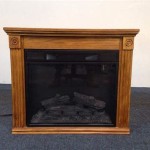Freestanding Wood Fireplace Reviews: Choosing the Right Model for Your Home
Freestanding wood fireplaces offer a combination of warmth, aesthetics, and efficiency, making them a popular heating option for many homeowners. Unlike traditional built-in fireplaces, freestanding models can be placed almost anywhere with proper venting, offering greater flexibility in design and installation. This article explores key considerations and reviews various aspects of freestanding wood fireplaces to assist in making an informed purchasing decision.
Understanding the Benefits of Freestanding Wood Fireplaces
Freestanding wood fireplaces present several advantages over other heating systems. One primary benefit is their heating efficiency. Modern wood fireplaces are designed with advanced combustion technology, allowing them to burn wood more completely and extract more heat. This results in less smoke, reduced emissions, and a more cost-effective heating solution compared to older, less efficient models. Many newer models are EPA certified, indicating that they meet stringent environmental standards for particulate matter emissions.
Another advantage lies in their aesthetic appeal. Freestanding fireplaces are available in a range of styles, from traditional cast iron to contemporary steel designs. This variety allows homeowners to select a fireplace that complements their existing décor and adds a focal point to their living space. Some models feature large viewing windows, providing an unobstructed view of the fire, enhancing the ambiance of the room.
Furthermore, freestanding wood fireplaces offer a certain degree of independence from traditional energy sources. During power outages, a wood fireplace can provide a reliable source of heat, ensuring comfort and safety. This can be especially important in regions prone to severe weather events that disrupt electrical grids.
Key Considerations When Selecting a Freestanding Wood Fireplace
Choosing the right freestanding wood fireplace involves considering several factors, beginning with heating capacity. The size and layout of the space to be heated are crucial determinants in selecting a fireplace with adequate BTU (British Thermal Unit) output. A fireplace that is too small will struggle to heat the space efficiently, while an oversized unit can lead to overheating and discomfort. Manufacturers typically provide BTU ratings and recommended heating areas for their fireplaces, which should be carefully reviewed. Homeowners should accurately measure the square footage of the room and consider factors such as insulation levels and climate when determining the appropriate BTU rating.
Venting requirements are another critical consideration. Freestanding wood fireplaces require a proper venting system to safely exhaust smoke and combustion gases. There are two main types of venting systems: single-wall and double-wall. Double-wall venting is generally safer and more efficient, as it reduces the risk of creosote buildup and chimney fires. The installation of the venting system should comply with local building codes and regulations, and professional installation is often recommended to ensure safety and proper function.
Firebox size and wood loading capacity affect the frequency of refueling. Larger fireboxes can accommodate larger logs and extend burn times, reducing the need for frequent refueling. This is particularly important for homeowners who plan to use the fireplace as a primary heating source. However, larger fireboxes also require more wood to maintain a consistent fire, so it's essential to balance capacity with wood consumption.
Material and construction quality are also important factors. Fireplaces constructed from high-quality materials, such as cast iron or heavy-gauge steel, tend to be more durable and long-lasting. Cast iron fireplaces retain heat well, providing a more consistent and radiant heat output. Features such as a reinforced firebox, airtight door seals, and efficient airwash systems contribute to the overall performance and longevity of the fireplace. The firebox's interior should be lined with firebrick or other refractory materials to protect the metal from extreme heat and prolong its lifespan.
Evaluating Specific Features and Technologies
Modern freestanding wood fireplaces incorporate various features and technologies designed to enhance efficiency, convenience, and safety. Catalytic combustors and secondary combustion systems are common features that improve combustion efficiency by burning off smoke and gases. Catalytic combustors use a coated ceramic honeycomb to oxidize unburned gases, while secondary combustion systems introduce preheated air into the firebox to promote more complete combustion. These technologies reduce emissions and increase heat output, making the fireplace more environmentally friendly and cost-effective.
Airwash systems are designed to keep the viewing window clean and clear by directing a stream of air over the glass. This helps prevent soot and creosote buildup, providing an unobstructed view of the fire. Some fireplaces also feature automatic air control systems, which regulate the airflow to the fire based on the temperature and combustion conditions. This helps maintain a consistent burn rate and optimize fuel efficiency.
Ash disposal systems vary among different models. Some fireplaces have a removable ash pan, which makes ash removal quick and easy. Others have a built-in ash drawer or a vacuum system for collecting ash. The ease of ash disposal is a significant factor for homeowners who use their fireplaces frequently.
Finally, safety features are paramount. Look for fireplaces that have been tested and certified to meet safety standards. Features such as a sturdy door latch, a spark arrestor, and a heat shield can help prevent accidents and ensure safe operation. Regular maintenance, including chimney cleaning and inspection, is essential for maintaining the safety and efficiency of the fireplace.

Which Is Better For Your Home Freestanding Stove Vs Fireplace Insert

Nova Wood Burning Stove Mf Fire

Reviews For Real Flame Deland Grand 63 In Freestanding Wooden Electric Fireplace White Pg 1 The Home Depot

Stovax Studio 1 Freestanding Wood Burning Stove Stylish

Reviews For Scott Living Meyerson 48 In Freestanding Media Console Wooden Electric Fireplace Natural Camel Ash Grain Pg 1 The Home Depot

Hergom Glance Freestanding Wood Fireplace Luxe Fireplaces

Stovax Studio 500 Freestanding Fire Review Best Wood Burner We Have Ever Had And A Few

Real Flame Aspen 49 In Freestanding Electric Fireplace Tv Stand Chestnut Barnwood 9220e Chbw The Home Depot

Freestanding Gas Fireplace Review 2024 Free Standing Stoves

Stovax Studio 1 Freestanding Wood Burning Stove Direct Stoves
Related Posts

